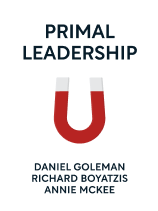

This article is an excerpt from the Shortform book guide to "Primal Leadership" by Daniel Goleman. Shortform has the world's best summaries and analyses of books you should be reading.
Like this article? Sign up for a free trial here .
Do you want your organization to become emotionally intelligent? How can you promote emotional intelligence at work?
Changing an origination’s work culture is difficult, but the authors of Primal Leadership explain four steps to make your workplace more emotionally intelligent. This means that workers will have a better understanding of their own emotions and how to work with their coworkers.
Here’s how to foster an emotionally intelligent workplace.
Creating an Emotionally Intelligent Organization
Emotionally intelligent organizations have a culture and set of norms that are founded on five components: truth, transparency, integrity, empathy, and healthy relationships.
(Shortform note: Experts add that in addition to EI, organizations also need to have balanced incentives or motivators, clear authority and decision-makers, accurate and timely information, and clear organizational structure to function properly. When these four components become misaligned, for example, the organizational structure becomes a power-hungry hierarchy because the incentives are too money-focused, the organization can become what experts call a “passive-aggressive organization.” This type of organization is the antithesis of an emotionally intelligent organization. So, when creating new norms and culture based on EI, be aware of how these four factors may be impacting the organization’s culture.)
The authors note that changing an organization’s culture is hard, but they recommend a few steps to foster emotional intelligence at work:
1. Uncover the emotional and cultural reality of the organization by asking employees at all levels of the organization open-ended questions. These questions should explore what employees care about, like, and dislike in the organization, and what’s helping or hindering their success. Within their answers, shared language will emerge that’ll uncover the underlying feelings, complex norms, and overall culture of the organization—in other words, the emotional reality.
| Interviews Provide More Accurate Data than Questionnaires Experts explain that interviews and open-ended questions are more effective than questionnaires at uncovering people’s true thoughts, ideas, and feelings for a number of reasons. 1. Interviewers can gather non-verbal data from employees. For example, if the employee acts nervous after the interviewer asks a question, that will let her know that she might be discussing a sensitive topic. 2. Interviewers can gather more precise data because employees have the opportunity to clarify questions, and interviewers have the opportunity to follow up on answers that are too vague. 3. Interviewers can adjust their questions in real-time. When employees are interviewed in person, interviewers have more flexibility to go into depth on certain questions or ask additional questions that might help them gather more information. This is especially helpful when exploring a general topic like organizational culture. |
2. Uncover the ideal emotional and cultural climate of the organization by asking employees how they think the organization should incorporate the five components into daily functions and interactions. The shared language that emerges will generate goals and will motivate people to change by tapping into their hopes for the future.
(Shortform note: In Crucial Accountability, the authors explain that getting people involved in finding solutions to problems, such as overcoming an organization’s cultural barriers, is one of the best ways to accomplish your goals. This is because when employees are involved in coming up with goals or solutions, they’re more intrinsically motivated to actually see these goals accomplished. Further, organizational culture is created by how people in the organization act and feel—so if your employees are motivated to change, you’re almost guaranteed to achieve your cultural goals.)
3. Bring the ideal culture to life by getting people—leaders and employees—emotionally involved. A great way to do this, the authors explain, is to bring people together to share a unique experience that highlights the new culture you want for the company. For example, you can bring employees together to watch an inspirational movie that illustrates the five components and have a discussion afterward.
| Strategies to Gain Emotional Buy-In Experts add to the authors’ advice on how to gain emotional buy-in from employees by laying out a number of recommendations: 1. Make the change real. Put visual reminders around workspaces so employees are constantly looking at the image they want to uphold, for example, positive quotes or posters. 2. Create a clear vision that you passionately share with employees—vividly and emotionally describe what you want the culture to become. This passionate speech will inspire employees. 3. Establish constant and open communication—regularly discuss with employees instances where they’ve excelled in the new standard and instances where improvement is necessary. Also, encourage employees to discuss their feelings—excitement, concern, doubt, and so on. |
4. Make these changes sustainable by ensuring that emotionally intelligent leaders who uphold the five components are present at every level of the organization. Further, make the development of emotionally intelligent leaders and employees an ongoing process—continue training people in EI and hire people who are emotionally intelligent.
(Shortform note: Business and management experts agree with the authors that EI leaders are crucial for sustainable change, but add that diversity is another key component to making organizational change sustainable. When leaders are diverse in age, gender, personality, race, background, and so on, organizations have a higher potential to develop unique and creative solutions, making them better at handling obstacles and unexpected issues. A diverse range of leaders also will be more effective at managing and relating to diverse employees.)

———End of Preview———
Like what you just read? Read the rest of the world's best book summary and analysis of Daniel Goleman's "Primal Leadership" at Shortform .
Here's what you'll find in our full Primal Leadership summary :
- Why emotional intelligence is the most important trait for a leader
- How you can boost the emotional intelligence of your group or organization
- How to create a learning plan that’ll help you gain the skills and microskills you lack






